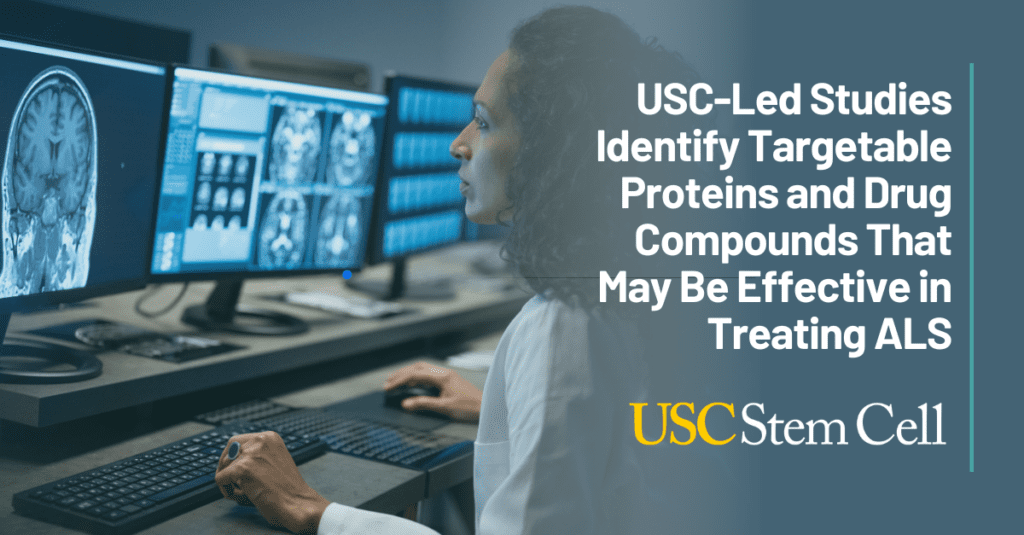USC-Led Studies Identify Targetable Proteins and Drug Compounds That May Be Effective in Treating ALS

A pair of studies by the University of Southern California (USC) Stem Cell program identified two proteins that could serve as targets for treating amyotrophic lateral sclerosis (ALS) and drugs that could be used in treatment.
The studies were led by Justin Ichida, PhD, the head of USC’s Ichida lab, and a 2016 Accelerating Drug Discovery for FTD Grant Recipient.
The first study focused on identifying therapeutic targets using induced pluripotent stem cells (iPSCs) to replicate motor neurons. To create these stem cells, researchers collected skin and blood cells from participants and used a special biochemical process to transform them into motor neurons that would retain defects created by ALS. The neurons also showed the presence of abnormal TDP-43 clumps common in FTD and ALS.
With these test neurons, researchers screened over 1,900 compounds to evaluate the efficacy of the various FDA-approved drugs for treating ALS. The study identified 50 compounds that were mostly effective as treatments, including approved ALS drugs edaravone (sold under the brand name Radicava) and riluzole.
Researchers noted that edaravone, riluzole, and other drugs were only modestly effective against sporadic ALS. Many compounds found to be effective were also discovered to activate the androgen receptor, which typically activates in response to hormones like testosterone.
Androgen receptor activation is likely to create unintended side effects, especially for women, which prompted researchers to identify other drug targets. The team pointed to SYF2, a protein involved in a process that controls how genes are read by the body to produce different proteins.
One of the more promising compounds the study identified was apilimod, which researchers noted could improve nerve cell survival and reduce the clumping of abnormal proteins like TDP-43 and PIKfyve. The second study built on this discovery by evaluating if blocking PIKFYVE accumulation with apilimod could be an effective treatment for ALS.
By inhibiting the accumulation of PIKfyve using apilimod, motor neuron death was reduced, according to study results. Additionally, researchers found that inhibiting PIKfyve increased exocytosis, the process cells use to remove unwanted molecules, which in turn caused motor neurons to dump TDP-43 clumps. Notably, researchers only observed expanded exocytosis in ALS-affected motor neurons and did not notice a similar effect in neurons from control participants.
“Our discoveries bring us closer to achieving our big-picture goal: finding treatments that can be broadly effective for all patients who suffer from ALS,” Dr. Ichida said.
Are you interested in learning about IPSCs and their use in FTD research? Click here to read about a study that used IPSCs to study mutated tau proteins.
Did you know that researchers can even order IPSCs online? Click here to read about the National Institutes of Health’s IPSC web portal.
By Category
Our Newsletters
Stay Informed
Sign up now and stay on top of the latest with our newsletter, event alerts, and more…
